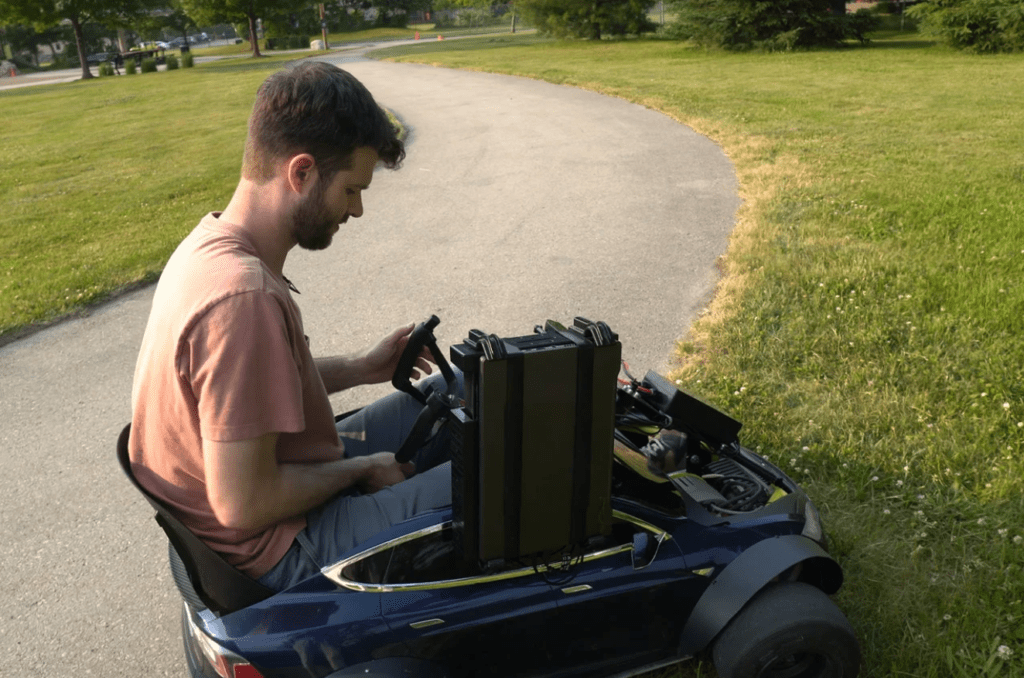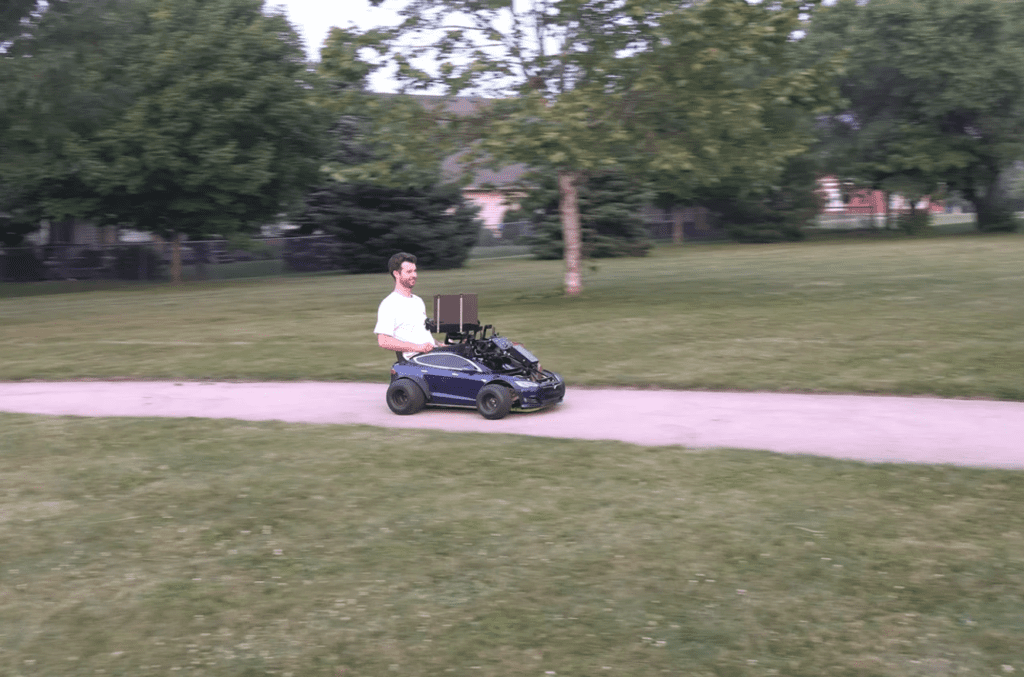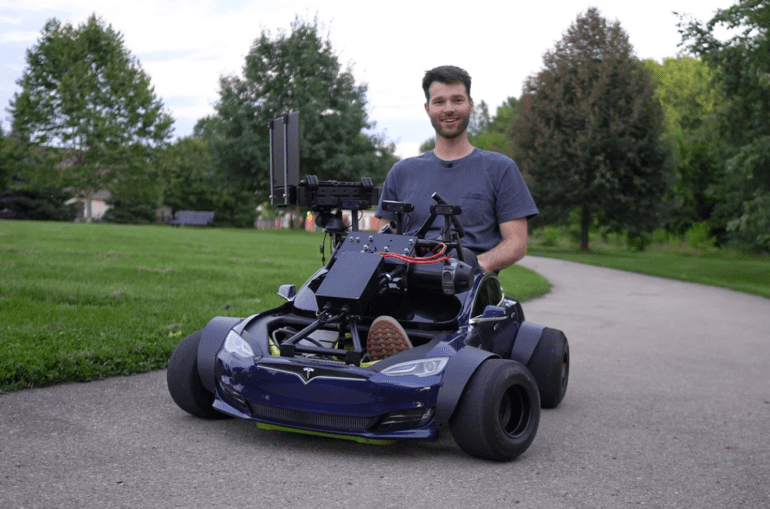TL;DR:
- Austin Blake’s innovative project transforms a toy car into a semi-autonomous vehicle using machine learning and webcams.
- Three Logitech C920 webcams feed data to the machine learning software, allowing the car to navigate based on 48,000 training images.
- The addition of two more webcams and bug fixes enhances the car’s navigation capabilities.
- Steering is controlled by a servo motor from an electric wheelchair, and the high-speed motor is upgraded to achieve speeds of up to 45mph.
- The car’s power comes from a DIY battery pack made from 18650 lithium-ion cells.
- While not fully self-driving yet, the project hints at the potential for future improvements.
Main AI News:
In the pursuit of autonomous vehicles, one DIY enthusiast takes a unique approach, starting small but dreaming big. Austin Blake’s project involves transforming a Radio Flyer Tesla Model S electric toy car into a semi-autonomous marvel, aptly named the Teskart. This innovative venture leverages Logitech C920 webcams – three in total, strategically positioned on the right, center, and left sides – to provide input to the machine learning software, which has been meticulously trained on 48,000 image sets of the test path.
Initially, the semi-autonomous Teskart encountered challenges, frequently veering off course with just a single webcam in action. Undeterred, Austin added two more webcams and addressed a critical bug, resulting in a remarkable transformation. The Teskart, propelled by the Radio Flyer Tesla, now adeptly navigates the makeshift track without missing a beat.

Source: YANKO DESIGN
To control steering, Austin ingeniously fashioned a bolt-on frame housing a steering servo motor salvaged from an electric wheelchair. But what about the high-speed motor capable of 6 mph? It has been replaced with the Motenergy ME0907 brushless electric motor, offering a staggering 45mph at 48V power. Austin’s plans include pushing the limits further with a 72V version in the near future.
The existing motor boasts impressive specs, with the ability to deliver 80 continuous amps and a peak of 220 amps for a minute. It drives the rear axle via a chain and draws power from a DIY battery pack constructed from 224 individual 18650 lithium-ion cells organized into 16 modules, each equipped with its battery management system.
While this project is indeed a remarkable feat, it’s essential to note that it’s not a fully self-driving creation. Currently, only the steering angle falls under the system’s control, while throttle management remains manual. However, there’s a tantalizing possibility that the data gleaned from behavioral cloning could lead to the incorporation of an Arduino-controlled component, bringing full throttle autonomy into the equation. When that day comes, we might indeed be looking at a true self-driving mini Tesla.




Source: YANKO DESIGN
Conclusion:
Austin Blake’s DIY semi-autonomous Mini Tesla showcases the creative fusion of technology and innovation in the automotive sector. While not a fully self-driving vehicle, this project exemplifies the possibilities of DIY enthusiasts pushing boundaries. In the market, it underscores the growing interest in autonomous and electric vehicle technologies, inspiring future innovation and experimentation.

